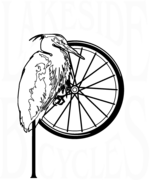Essential Cycling Accessories.
Introduction
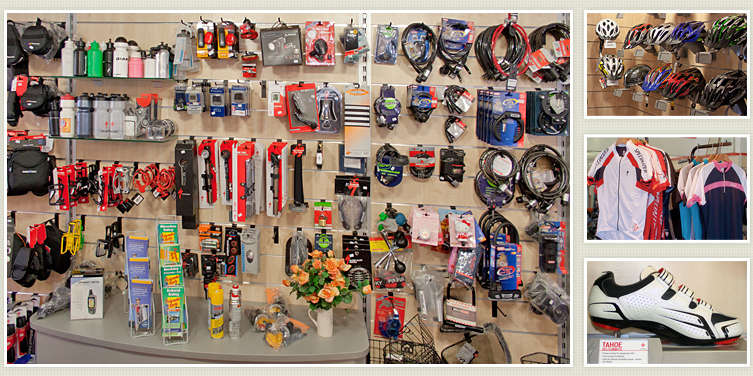
Once you have your new, correctly sized and properly fit bicycle you can ride off without another care in the world. Arriving at your destination in comfort, safety or at all may be another matter. Careful selection of accessories, made with help from the professionals at Lakeside Bicycles will help keep you on the road while preserving the child-like sense of joy you felt at the time of the initial purchase. Please, stay on the road, preserve the child we worked so hard to release and let Lakeside Bicycles guide you through the Zen art of the accessories from Safety, Comfort and Courtesy to Not Being.
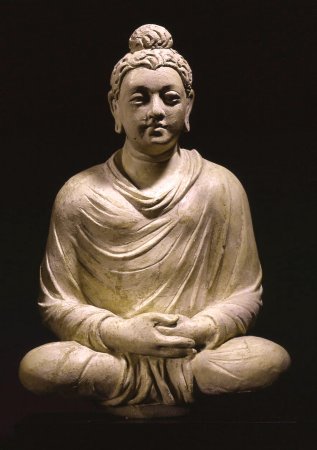
"Accessorise, it is what separates you from animals with no thumbs."
Level 1: Safety
While bicycling is an inherently safe activity there are risks. While weighing those risks we suggest you consider these safety items. None of them is overly expensive or burdonsome and each can improve the already good odds that you will return from every ride whole and happier than when you left (you will have just been out riding, right?).
- Helmet: The sine qua non of cycling safety modern helmets are light weight, well ventilated, attractive and inexpensive (competent helmets start at $60).
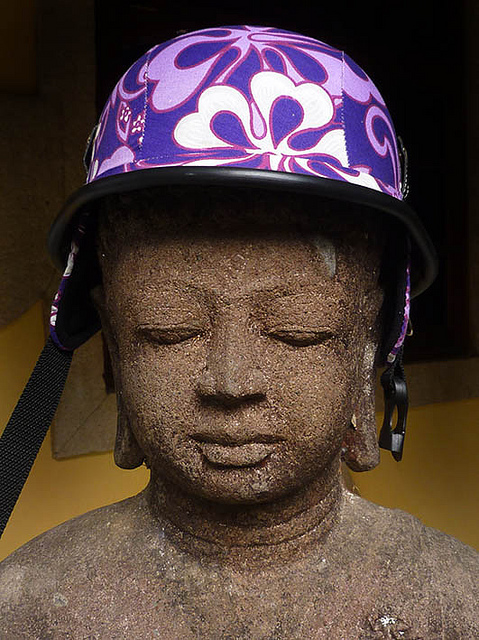 By protecting your head from coming into sudden contact with sharp objects they help stop the unpleasant puncture wounds that simply will not stop bleeding. The hard shell surface reduces friction in the event your moving head attempts to come into contact with pavement. This reduces strain on your neck and skull. while the engineered foam padding mitigates deceleration on impact reducing the likely hood of a concussion. All in all the cycling helmet provides tremendous functionality at a very low cost.
By protecting your head from coming into sudden contact with sharp objects they help stop the unpleasant puncture wounds that simply will not stop bleeding. The hard shell surface reduces friction in the event your moving head attempts to come into contact with pavement. This reduces strain on your neck and skull. while the engineered foam padding mitigates deceleration on impact reducing the likely hood of a concussion. All in all the cycling helmet provides tremendous functionality at a very low cost. - Gloves: Cycling gloves with padded palms serve to reduce stress on the hands due to vibration which increases comfort and helps prevent numbness or nerve damage. In the event of a fall gloves protect the palm of your hands from impact and abrasion which, as anyone who has recovered from serious cuts or scrapes on their palms knows, speeds recovery.
- Glasses: Depending on the color lens you chose cycling glasses reduce eyestrain, improve contrast, and all of the glasses and goggles sold by Lakeside Bicycles are 100% UV protective. At the same time they protect the eye from impact injuries and, indirectly, protect the rest of your body from the scrapes, breaks and cuts that accompany the crash which follows being struck in the eye by a beetle traveling at 40 mph (been there, done that),
- Tail Lights: The most common danger from motorists comes when being overtaken. There are new tail lights which flash so intensely that some models are illegal to use after dark. Day and night tail lights dramatically increase our visibility and improve our safety.
- Head Lights: New generations of head lights generate better illumination than older models costing four or five times as much, they are light weight, rechargeable (in many cases using a USB port) and portable. While not as critical to safety as tail lights, they do improve your visibility to oncoming traffic. Also, one of life's less pleasant moments still comes when an obstacle appears out of the dark and passes under our wheels because we were going so fast that our headlight failed to illuminate it. If you are going to ride after dark, buy the most powerful headlight you can afford.
- Mirrors: We are not big fans of mirrors. We recognize their utility and, so, sell them. We are of the opinion that every cyclist should be able to safely look over their shoulder or under their arm in order to see what is behind them. Remember The first rule of Italian riding: "what's behind you doesn't matter".
- Bells: Stuff and nonsense. More and more jurisdictions are requiring bells on bike paths, apparently based on the conviction that the rider in front of you is under such strain that they are no longer able to hear in the frequencies employed by the human voice. This is both silly and insulting to the rider in front of you. Still, there are some cool bells out there: we recommend either ginormous Ding-Dong bells or brass bells for the quality of their tone.
"Don't try not to crash. Be the not to crash"
Level 2: Comfort
The more comfortable you are on the bike, the more you are likely to ride. Comfort on the bikes comes from choosing the correct size, finding the correct position on your new bike and carefully selecting appropriate accessories to use with your bike. If you are new to the sport or returning after a long break, we will be glad to advise you on size, fit and the sometimes puzzling array of available accessories. Each of the categories described below will help improve some facet of every ride and help you to enjoy yourself without needless discomfort.
Not everyone rides to train. If you are training to become faster or to improve endurance, then the process of "training load and recovery*" is probably going to cause some discomfort (commonly know as pain). That discomfort should not be confused with the pain of an injury or an improperly equipped or fitted bike. We can help you achieve your goals with a minimum of pain, but it is an inevitable part of the path to improvement and seldom subject to magic bullet cures.
- Saddles: This isn't technically an accessory, all bikes come with a saddle. Saddles do play a critical role in comfort so we squeezed in a few words. The key to saddle comfort is shape, not padding. Start by giving the saddle that came with your bike a fair trial, several rides of varying duration (if it is impossible from the outset, skip this step). If it doesn't work out then you get to try different brands and models until you find one that works. We stock several test ride saddles which we can loan you, and we will take returns on saddles that come back in sellable condition. In the end you may end up owning several expensive saddles that didn't work out. Most of us do. This is a modest, long term investment in posterior comfort and no more unreasonable, for example, than trying several different running shoes.
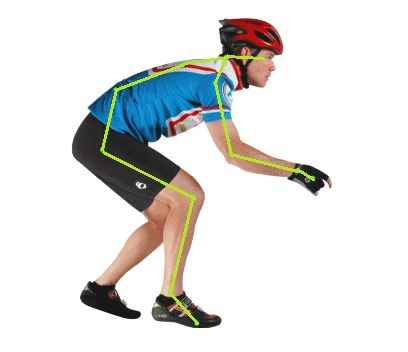
- Shorts: Next to your saddle (right next to your saddle), padded cycling shorts have the most impact on your comfort. Prices start at around $30 and go up to over $350, the $30 shorts aren't worth the ink used to print this. Try on several brands and prices, they should be designed to fit in a "riding" position (Photo) and should be snug and comfortable when you mimic it in the dressing room. The more expensive the shorts the better and more comfortable the pad or 'chamois'. Unfortunately, cycling shorts are designed to be worn right next to the skin and the only way to be sure you have the right ones is a test ride: no returns.
- Gloves: Padded cycling gloves help isolate your hands from road vibration. They come in a variety of styles including short fingered, long fingered, insulated and water proof for all temperatures and weather.
- Shoes: Properly designed cycling shoes will provide you with comfort, support and improved efficiency (particularly when combined with clipless pedals). We stock a variety of brands and price points and will be glad to help you in getting a correct fit. If you already own shoes and pedals and are happy with them, stick with them. If you are making your first purchase we recommend choosing a shoe/pedal combination and starting off near the low end, $250 for both (or there-a-'bouts) should do it. Like saddles, you may end up owning several pairs of shoes before you find a winner. Unlike saddles we don't offer loaners When you have found a solution is the time to start shoveling in money.
- Jerseys: For many of your rides you can probably get by with a Cotton T-shirt (ewwwww!). In hot, humid conditions a well designed, technical jersey can be the difference between having fun and being miserable. Technical jerseys are designed to fit close to your skin and efficiently wick moisture away from your body greatly aiding in cooling. Cycling jerseys are built with three or more pockets located in back where they won't interfere with your riding, long zippers for better cooling and are usually made in bright, easily visible colors enhancing safety.
- Water Bottles and cages/Hydration Packs: Keeping well hydrated will improve your efficiency and comfort particularly on long or hot rides. On very hot days hydration can be the difference between riding home or calling for a ride (or, in the event of heat stroke, an ambulance). Water Bottles are designed to
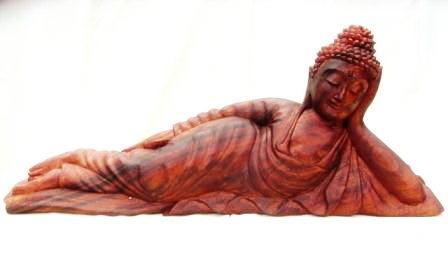 be held in water bottle cages which attache to pre-drilled holes on the bicycle frame. They can be quite inexpensive, they are efficient to use (though it can take a while before you are comfortable drinking while riding) but they hold a limited amount of water. Hydration packs can hold up to 5 liters of water, can be used to carry tools etc., and can be easier to use while riding but they are relatively expensive, harder to keep clean and are viewed with derision by dyed-in-the-wool road riders.
be held in water bottle cages which attache to pre-drilled holes on the bicycle frame. They can be quite inexpensive, they are efficient to use (though it can take a while before you are comfortable drinking while riding) but they hold a limited amount of water. Hydration packs can hold up to 5 liters of water, can be used to carry tools etc., and can be easier to use while riding but they are relatively expensive, harder to keep clean and are viewed with derision by dyed-in-the-wool road riders.
An argument can be made for including handle bar tape or grips to this list, we disagree and won't.
"One does not find comfort by seeking comfort. The only true path to comfort is in trying many different saddles and in not trying many different saddles"
*In order for a muscle (including the heart) to increase strength, it must be gradually stressed by working against a load greater than it is used to. To increase endurance, muscles must work for a longer period of time than they are used to or at a higher intensity.
Level 3: Courtesy
These are miscellaneous accessories which can make life easier for your fellow riders as well as for you.
- Roadside Repair Kit: There is nothing more irritating for you or your fellow riders than having a minor equipment failure such as a flat and being unable to do anything about it. Every ride should include the following items:
- A Multi-Tool: These can get quite exotic (and heavy), remember that this is not a survival tool: you are going for a ride not soloing Mt. Rainier. A basic multi-tool should include: 4, 5 and 6 mm hex wrenches, a T25 Torx wrench, a Phillips and flat bladed screw driver. It is nice but not critical if the tool has 2, 2.5, 3 and 8mm hex wrenches, a chain tool and maybe a knife.
- A Tube Patch Kit: Not only does this perform the obvious function, the patches can be used to temporarily fix a large tear in your tire.
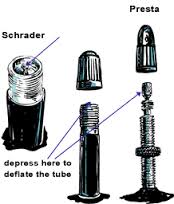
- A Tube: Selected to match your tire size and valve type (There are two, Presta and Schrader, Photo on Right). For road tubes with presta valves we recommend getting one with a 60mm long valve. This is more useful if an ill-prepared fellow rider has a deep dish rim.
- A $20 Bill: Enough to buy you an emergency meal or a call for rescue. In an emergency it can be used as a boot for a really big tear in your tire.
- Tire Irons: Replacing a tube can almost always be accomplished with your bare hands. If the rim is slightly large, if the tire has been on the rim for an extra long time, if it is very cold or raining, it may be next to impossible without tire irons. Get a pair, if you don't you will certainly brake the one you have the first try to use it.
- An Inflation Device: We prefer a CO2 inflater and 16g cartridges. Despite the fact that the cartridges are wasteful, they are recyclable (they are made out of steel) and it is a quick way to inflate a tire: important if you have fellow riders waiting on you or in foul weather.
- A Seat Bag: Something large enough to hold everything with maybe some room to spare for your cell phone and/or wallet.
- Pumps: We suggest two. (We suggest that any bicycle pump be equipped with a "Smart Head". That is a pump head that automatically adapts to either Presta or Schraeder valves withut requiring the rider to make fidling changes to the pump head. They make life a LOT easier.)
- A Floor Pump for every day. Floor pumps generate an enormous volume of air to quickly inflate or top off your tire and they come with a pressure guage making it easy to begin each ride knowing that your tires are properly inflated.
- A Frame Pump; Despite the fact that you have already spent $25 for a CO2 inflater it is nice to know that you have a backup should you forget to replace your cartridges or simply run out on a long ride. Frame pumps come in a variety of styles, the most popular are Mini Pumps which will fit on a bracket that mounts under a water bottle cage, in your jersey pocket or in your seat bag. The disadvantage of a mini pump is that they are just about useless for daily topping off your tires, hence the floor pump.
- Lock: We recommend never letting your bike out of your sight. If you do, you need a lock. There are a huge variety, let us help you decide which is appropriate to your requirements.
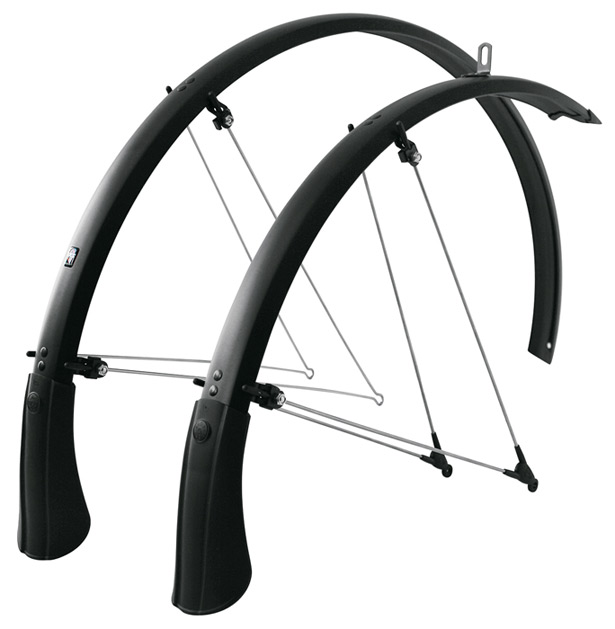 Fenders: If you are planning on riding in the rain, fenders not only help keep you relatively clean and dry, when riding in a group appropriate fenders will protect riders behind you from a constant spray of filthy water. Fenders come in a variety of styles. For occasional, brief forays into the wet clip-on fenders are sufficient. For commuting or training in the rain we suggest full wrap-a-round fenders (Photo on Left) will keep you and anyone riding behind you free from spray off of your wheels. Their biggest drawback is that installation can be demanding, particularly on road bikes with very narrow tire clearances. For a price (and a pretty price it is) our mechanics can install fenders on any bicycle. If you need help, please feel free to spend as much time chatting with them as it takes to convince you to let us install them for you.
Fenders: If you are planning on riding in the rain, fenders not only help keep you relatively clean and dry, when riding in a group appropriate fenders will protect riders behind you from a constant spray of filthy water. Fenders come in a variety of styles. For occasional, brief forays into the wet clip-on fenders are sufficient. For commuting or training in the rain we suggest full wrap-a-round fenders (Photo on Left) will keep you and anyone riding behind you free from spray off of your wheels. Their biggest drawback is that installation can be demanding, particularly on road bikes with very narrow tire clearances. For a price (and a pretty price it is) our mechanics can install fenders on any bicycle. If you need help, please feel free to spend as much time chatting with them as it takes to convince you to let us install them for you.- Cycling Computers: Cycling computers come in a wide variety from ones that display speed, distance and time-of-day to GPS computers that record and display a bewildering array of information including dozens of mapping functions (location, route, return route,etc.), cadence functions, heart rate functions and much more. While by no means essential, they can be fun and they spare your riding partners from constant "Are we there yet?" , "How long was the ride?" and "How fast are we going?" questions.
"Each ride is a blossom to be viewed with a curious spirit" 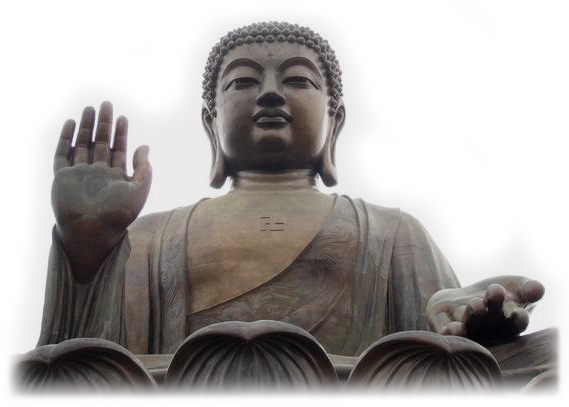
Not Being:
In summary, we recommend you consider, at a minimum, the following accessories for your bike: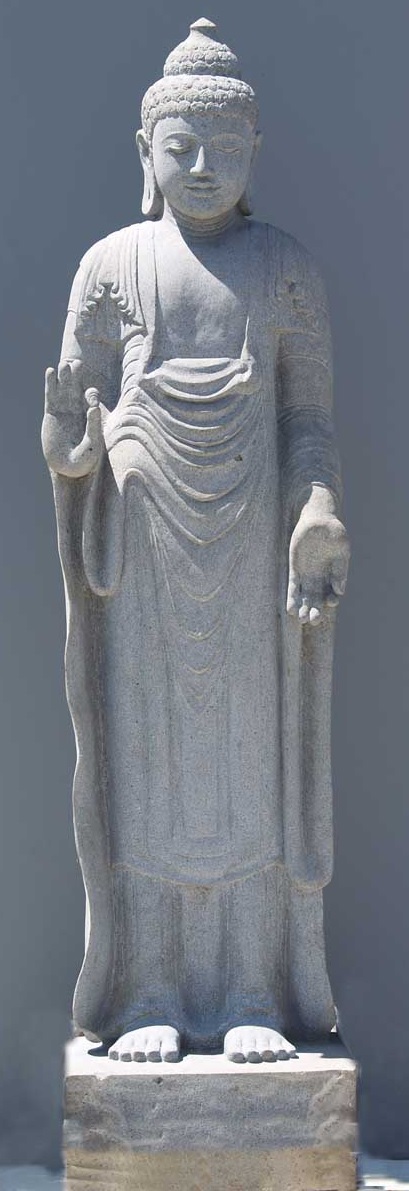
- For Safety:
- Helmet
- Gloves
- Glasses
- Head Light
- Tail Light
- Mirror (maybe)
- Bell (only if required by law)
- For Comfort:
- Shorts
- Shoes
- Jersey
- Gloves
- Water Bottles and Cages or Hydration Pack
- For Courtesy:
- Road Side Repair Kit
- Pump(s)
- Lock
- Fenders
- Computer
"The truth of Zen is the truth of riding, and riding means to ride, to move, to act, not merely to coast"
